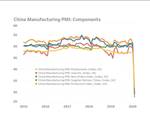3D Printing Crowdsourcing to Help Hospitals Experiencing Supply Shortages Linked to COVID-19
As the virus continues to spread worldwide and breaks supply chains, 3D printers and expertise in additive manufacturing can lend a helping hand. Potential sources identify themselves using an online directory.
Share
Read Next
When a Northern Italian hospital needed a replacement valve for a reanimation device and the supplier had run out with no way to get more in a short time, a company in the area, Isinnova, had an immediate solution. After a phone call from Massimo Temporelli, founder of the FabLab in Milan, CEO Cristian Fracassie brought a 3D printer directly to the hospital, as the 3D Printing Media Network reports, and redesigned and then produced the missing piece.
After the first valves were 3D printed using a filament extrusion system, on location at the hospital, more valves were later 3D printed by another local firm, Lonati SpA, using a polymer laser powder bed fusion process (photo below) and a custom polyamide-based material.
Many people from around the globe have meanwhile reached out to offer help in producing these parts and others, donating their AM skills. In a public document hundreds of 3D printing professionals and hobbyists, companies, design engineers and doctors have signed up willing to share their printers or design expertise to help fill the gap in supply shortages linked to COVID-19.
Related Content
-
Understanding PEKK and PEEK for 3D Printing: The Cool Parts Show Bonus
Both materials offer properties desirable for medical implants, among other applications. In this bonus episode, hear more from Oxford Performance Materials and Curiteva about how these companies are applying PEKK and PEEK, respectively.
-
Micro Robot Gripper 3D Printed All at Once, No Assembly Required: The Cool Parts Show #59
Fine control over laser powder bed fusion achieves precise spacing between adjoining moving surfaces. The Cool Parts Show looks at micro 3D printing of metal for moving components made in one piece.
-
3D Printing Startup to Deliver Thousands of Custom Hearing Aids Over Next Five Years
Starting with a pilot program in Jordan, nonprofit 3DP4ME is developing workflows to 3D print hearing aid earmolds and prosthetics near the people who need them.












